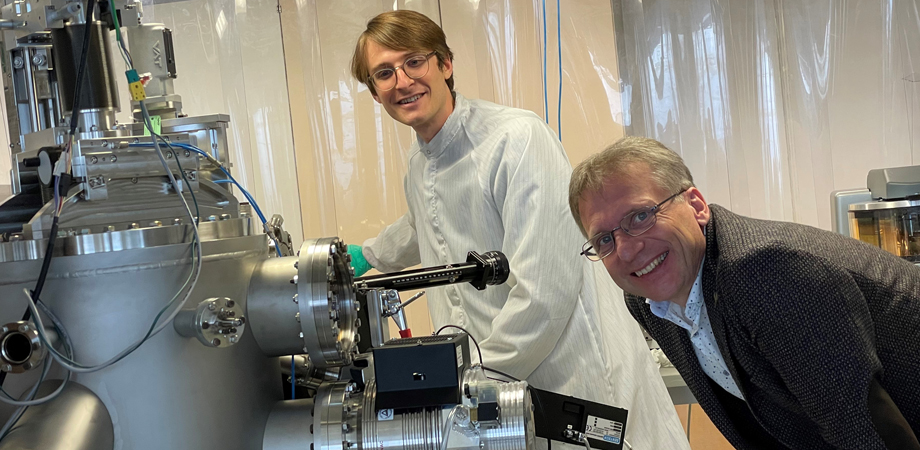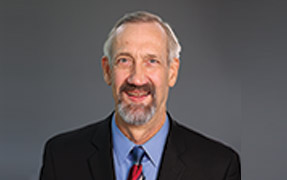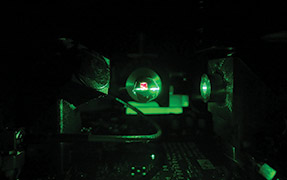Heady Matters: On the cusp of X-ray tomographic mapping of the human brain

“We believe that we are on the cusp of imaging the 86 billion biological cells of the human brain and could secure funding for the upcoming four years,” says Bert Müller of the University of Basel. “We envision starting in February of 2025, and we are looking for motivated team members, PhD students, and postdocs who would like to actively contribute to acquire such big data and make them available for the entire community. For sure, the human brain is only one fascinating example for at the forefront of dealing with big data.”
What are some of your responsibilities as the Thomas Straumann Chair for Materials Science in Medicine at the University of Basel?
As a university professor, teaching is an essential part of my work. I feel responsible to integrate the latest developments in the field as early as possible into the student’s education, so that they can successfully work at the forefront of research. The ability of the students to fruitfully work with state-of-the art instrumentation is a key success factor in the field of materials science.
You are also the founding director of the Biomaterials Science Center at the University of Basel. What are some of the current projects there that you’re most excited about?
Recently, we have substantially strengthened our core facility on micro- and nanotomography by the acquisition of two high-resolution tomography systems, an investment of more than $2 million. Our consortium of eight partners from the medical and the science faculties – as well as the Basel Natural History Museum – can effectively image a wide variety of specimens, ranging from physically soft tissues to unique parts of animals who lived millions of years ago.
A prominent example of X-ray imaging, so far reserved to synchrotron radiation sources, are the annual layers in human-tooth cementum. There are similarities here to annual layers of tree trunks. The contrast within the annual layers and the geometrical parameters of the teeth indicate changes in life conditions, including nutrition availability and pregnancy. We demonstrated the imaging of annual layers from the tooth cementum of a famous mummy found in our city, and a relative of the recent UK Prime Minister Boris Johnson.
What led to your interest in biomedical imaging, in particular X-ray tomography?
More than 25 years ago, the Swiss Federal Laboratories for Materials Science and Technology (Empa) and the materials department of ETH Zurich started a collaboration on X-ray tomography. At that time, I successfully wrote a grant application to the Swiss National Science Foundation. With this money, Philipp Thurner, now professor for biomechanics in Vienna, could complete his PhD thesis. For me as a physicist, it was extremely helpful to start collaborating with medical experts in the field.
What do you see as the most important aspect of your work at this time?
We do collect more and more data, which have to be used in an appropriate fashion. Digitalization in medicine includes both opportunities and challenges. One has to be careful and ethical to correctly use the data for the benefit of patients. We have better and better machine learning and AI tools, which will rapidly change our life.
What is most exciting or surprising about your work? What are some of the challenges?
As mentioned above, I have been working for more than two decades on hard X-ray imaging, but the foci of research always change in unpreceded directions. Lenses for hard X rays are usually large and hardly effective compared to optical lenses. Together with partners, we have built combined refractive and diffractive X-ray optics to realize an achromat and an apochromat for X-ray focusing.
In vivo imaging of living mice is medically more relevant and recently became one of our main research activities with our partners from Bern and Zurich. Unfortunately, we could not continue the preliminary studies in France, because the only animal facility at the European Synchrotron Radiation Facilities (ESRF) was closed. We had to apply for beamtime on other continents and were successful in Japan, Canada, and Australia. For sure, it is a challenge to bring a rather large interdisciplinary team of physicists, engineers, and veterinary doctors together with numerous instruments to the other continents and back. As one of the responsible PIs, I like to give guidance and support during preparation and execution of the beamtime as well as the subsequent data treatment.
Your career includes both academia and industry. What are some key lessons you’ve learned from combining these two in your career?
To make it very clear, during the last five years, I was not operating in industry – I just actively supported current and former team members in founding and developing start-up companies. Unfortunately, two of them are not operational anymore. Nevertheless, I am very keen that one company is successful in treating patients with neurodegenerative diseases. For sure, the results of our research should find their way to the patients as early as possible.
What do you see as the future of biomedical imaging? What would you like to see?
Condensed matter consists of building blocks: atoms and molecules. Living matter is built from biological cells. Therefore, animals and animal forms, including mice and human tissues, should be made visible down to the level of individual cells. Currently, the mouse brain could be three-dimensionally visualized with the desired spatial resolution – about one micrometer. The dissemination of the terabyte-size data, however, is still in its infancy. My team is now proposing the post mortem imaging of the human brain, which is more than three orders of magnitude larger than that of a mouse. That means that the raw data will exceed the size of several petabytes.
| Enjoy this article? Get similar news in your inbox |
|



